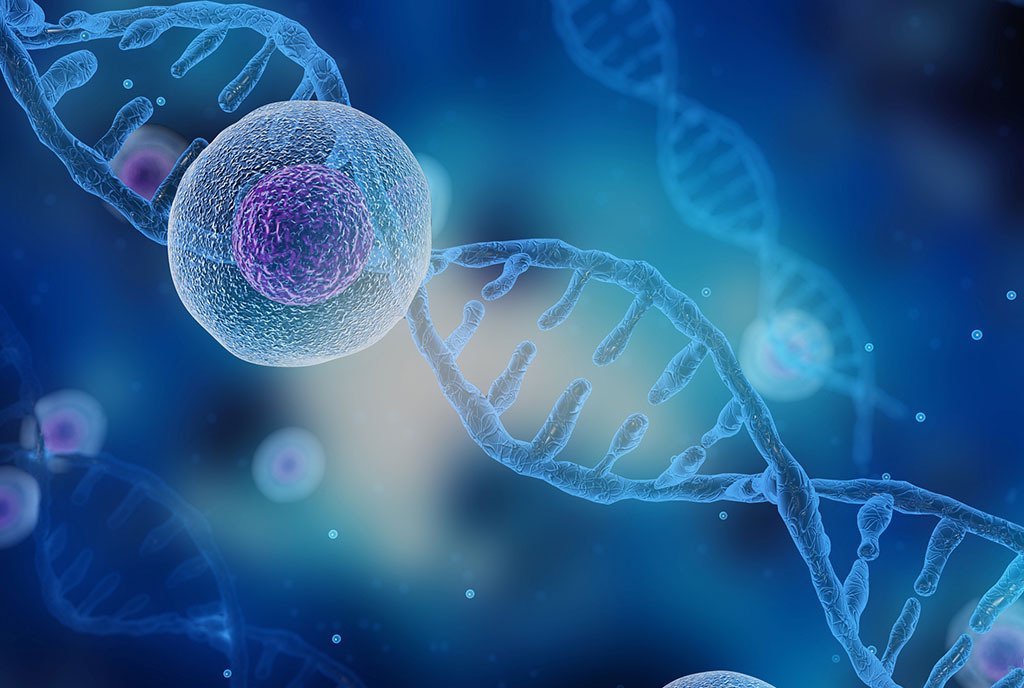For over a century, cancer has loomed in the human psyche like a whisper of fate—sometimes silent, sometimes roaring, but always terrifying. It is not a single disease, but a tangled family of disorders that arise from the most intimate part of ourselves: our own cells, rebelling. To call it a war feels apt, but wars are fought between enemies. Cancer is more tragic than that—it is a betrayal.
In 2025, we stand on the edge of a new era. The treatments of today are no longer the blunt-force tools of the past. Instead of carpet bombing the body with chemicals, researchers now talk of precision, personalization, and engineering cells to become warriors. We are rewriting the rules of engagement, weaponizing knowledge, and—most remarkably—beginning to dream of cures that were unthinkable just a generation ago.
Precision Replaces Poison
In the mid-20th century, the world learned to fight cancer with three weapons: surgery, radiation, and chemotherapy. While life-saving for many, these methods lacked finesse. They killed rapidly dividing cells—yes—but they also harmed healthy tissue. Hair fell out. Nausea became constant. Immune systems collapsed. And for many, the disease would return, more aggressive than before.
Now, medicine is shifting from destruction to discrimination. Thanks to advances in genomics and artificial intelligence, oncologists can increasingly pinpoint the exact mutations driving a person’s cancer. The human genome, once a code locked in mystery, has become a map that reveals vulnerabilities.
Drugs like trastuzumab (Herceptin) and imatinib (Gleevec) began this revolution by targeting specific proteins that fuel cancer growth. But the new generation of therapies goes further—targeting pathways, editing genes, and exploiting cancer’s own weaknesses in ways that were once confined to science fiction.
Take, for example, KRAS inhibitors. For decades, KRAS mutations were considered “undruggable”—a taunt to scientists. But in recent years, targeted inhibitors like sotorasib have shown promise in shrinking tumors in lung and colon cancers once deemed hopeless. They work by binding to specific mutation forms, leaving normal cells mostly unharmed. These are not sledgehammers. They are scalpels.
Immunotherapy: Turning the Body Into a Battlefield
Perhaps the most transformative breakthrough in modern oncology has been the rise of immunotherapy—a set of treatments that awaken the immune system to recognize and attack cancer cells. It is an idea as beautiful as it is powerful: train the body to see the enemy hiding in plain sight.
Checkpoint inhibitors were the first major triumph in this domain. Cancers like melanoma, lung cancer, and Hodgkin’s lymphoma once carried grim prognoses. Now, drugs such as nivolumab, pembrolizumab, and atezolizumab have offered durable responses—sometimes even complete remission—by blocking the “brakes” cancer places on immune cells.
But checkpoint inhibition is just the beginning. CAR-T cell therapy has taken the world by storm, especially in blood cancers. This process involves harvesting a patient’s T-cells, genetically engineering them to recognize a cancer-specific antigen, and infusing them back into the bloodstream. These modified cells become hunters. In diseases like B-cell leukemia, CAR-T therapy has shown cure rates of over 80% in patients who had exhausted every other option.
New research is pushing CAR-T therapy into solid tumors—a far more complex challenge due to the tumor microenvironment and antigen heterogeneity. Trials in glioblastoma, pancreatic cancer, and ovarian cancer are underway, with engineered cells being further augmented with “logic gates” and “safety switches” to navigate the maze of normal tissues.
The future of immunotherapy may not rely solely on live cells, either. Cancer vaccines are emerging—not the kind to prevent cancer like the HPV vaccine, but therapeutic vaccines that stimulate the immune system against existing tumors. Personalized neoantigen vaccines, designed for the unique mutation profile of a person’s tumor, are entering clinical trials. Each vaccine is as unique as the patient who receives it.
Liquid Biopsies and the Age of Early Detection
Catching cancer early has always been the golden ticket. The difference between stage I and stage IV is often the difference between life and death. Traditional biopsies—cutting into tumors—are invasive and risky. Imaging only sees what’s already large enough to matter. But in our blood flows a secret language: fragments of DNA shed by tumors, invisible to the eye but rich with information.
These fragments, called circulating tumor DNA (ctDNA), can now be detected by highly sensitive assays. This technology—known as liquid biopsy—promises to revolutionize both detection and monitoring. One test, Galleri, developed by GRAIL, can screen for over 50 types of cancer with a single blood draw, even before symptoms appear.
Beyond diagnosis, liquid biopsies help oncologists monitor treatment response and detect relapse earlier than traditional scans. If a tumor begins to shed ctDNA again, it can signal microscopic recurrence, allowing preemptive strikes. It’s as if cancer has lost the ability to hide.
In parallel, AI-enhanced imaging is improving accuracy. Machine learning models trained on millions of scans now detect breast, lung, and prostate cancers earlier than human radiologists. Combined with blood-based screening, these technologies are nudging us toward an era of real-time cancer surveillance—the dream of a routine test that tells you, years before illness, that something has begun to go wrong.
CRISPR and the Gene-Editing Revolution
If immunotherapy is the most poetic approach—letting the body heal itself—then gene editing is the most audacious: rewriting the script of life to correct cancer from within.
Enter CRISPR-Cas9, a molecular tool that acts like a pair of scissors guided by a GPS. It can cut DNA at precise locations, remove mutations, or even insert corrective genes. While the ethical debate around germline editing is fierce, somatic editing—targeting adult cells—has become a playground for cancer research.
In China and the United States, early trials have already tested CRISPR-edited T-cells in people with lung and blood cancers. The goal: improve immune recognition or make cancer cells more susceptible to drugs. A next-generation version, base editing, is even more precise, altering individual DNA letters without cutting the strand.
CRISPR is also being used to model cancer in the lab with extraordinary speed. Scientists can now replicate specific tumor mutations in mice or organoids, speeding up drug development and eliminating much of the trial-and-error of traditional approaches.
Perhaps most exciting is the concept of gene circuits—programs embedded into cells that turn on therapeutic genes only in the presence of cancer signals. This technology could deliver chemotherapy directly to tumors, bypassing healthy tissue entirely.
Microbiome and Metabolism: The Unseen Forces
As we look deeper into cancer biology, it becomes clear that tumors do not grow in isolation. They exist within complex ecosystems—bodies that have microbiomes, metabolic rhythms, and inflammatory tendencies. These previously overlooked factors are now frontiers of exploration.
The gut microbiome has been found to influence the effectiveness of immunotherapy. Certain bacteria prime the immune system, while others suppress it. In some studies, fecal transplants from patients who responded to checkpoint inhibitors into non-responders triggered a newfound immune response. This bizarre but powerful finding suggests that altering gut flora could augment cancer treatment.
Meanwhile, researchers are exploiting cancer metabolism. Tumors often have a voracious appetite for glucose, and new drugs aim to starve them or reroute their energy pathways. Agents targeting glutamine metabolism, lactate shuttling, and even mitochondrial function are entering clinical trials.
Another fascinating area is tumor hypoxia—regions of low oxygen that resist radiation and chemotherapy. New therapies are being designed to either oxygenate these zones or activate only under hypoxic conditions, turning the tumor’s defense into its downfall.
Psyche, Body, and Healing
In the quest for cures, we often overlook the most human element of cancer treatment: the patient. Advances in technology must be accompanied by advances in compassion, support, and personalized care. More than ever, treatment is becoming holistic, addressing not just tumors but the emotional, psychological, and spiritual suffering that cancer imposes.
Digital health platforms are giving patients real-time access to symptom management, mental health counseling, and peer support. Wearables now track vital signs, fatigue levels, and even subtle cues of depression, alerting care teams before crisis sets in.
Psycho-oncology, once dismissed, is gaining ground. Studies show that mindfulness, narrative therapy, and even music therapy can significantly improve quality of life, treatment adherence, and recovery time. This is not about sentimentality. It is about biology: stress hormones can fuel inflammation, and emotional resilience improves immune response.
Perhaps the greatest gift of modern cancer care is dignity—the ability to be heard, understood, and cared for as a whole person. In palliative settings, new drugs like lofexidine and psilocybin are helping patients manage pain and existential fear in ways that are humane and scientifically grounded.
From Bench to Bedside: The Role of AI and Big Data
All these advances—genomics, immunotherapy, imaging—generate mountains of data. Until recently, no human could make sense of it all. Enter artificial intelligence, the silent partner in the cancer revolution.
AI algorithms now comb through pathology slides, identifying patterns invisible to the human eye. In radiology, they predict tumor growth and suggest optimal treatment regimens. In drug discovery, machine learning accelerates the identification of new molecules by modeling protein-ligand interactions.
Perhaps most profoundly, AI helps match patients to clinical trials. A task once limited by geography and bureaucracy is now being streamlined by intelligent platforms that parse a patient’s unique profile and recommend cutting-edge therapies across the globe.
As we enter the era of digital oncology, clinicians will become navigators in a sea of personalized options. AI won’t replace doctors—it will amplify them.
Hope on the Horizon
The past was a battlefield of guesswork. The future is a terrain of insight. Five-year survival rates for many cancers are improving. Some childhood leukemias now have survival rates above 90%. Melanoma, once a death sentence, is often curable in its advanced stages thanks to immunotherapy. Even pancreatic cancer—a stubborn nemesis—is seeing breakthroughs with targeted agents and earlier detection tools.
Yet sobering challenges remain. Drug resistance evolves. Access to treatment remains inequitable. Many advanced cancers still elude cure. But hope—real, data-driven, scientifically sound hope—has never been stronger.
Cancer may not vanish from our world. But it is losing its grip on our future.
A Human Story
In every lab breakthrough, there is a patient waiting. A mother holding her child. A husband watching his partner sleep. A teenager writing poetry in the hospital bed. These are not statistics. They are the reason this fight matters.
Science may one day conquer cancer. But it is love, perseverance, and the refusal to surrender that sustain the struggle today. In every cell edited, every immune cell reawakened, every early test caught in time, we are not just treating disease—we are restoring the possibility of more birthdays, more embraces, more memories.
That, in the end, is the most advanced treatment of all: the restoration of life itself.






